Games PC FATE OF THE DRAGON User Manual
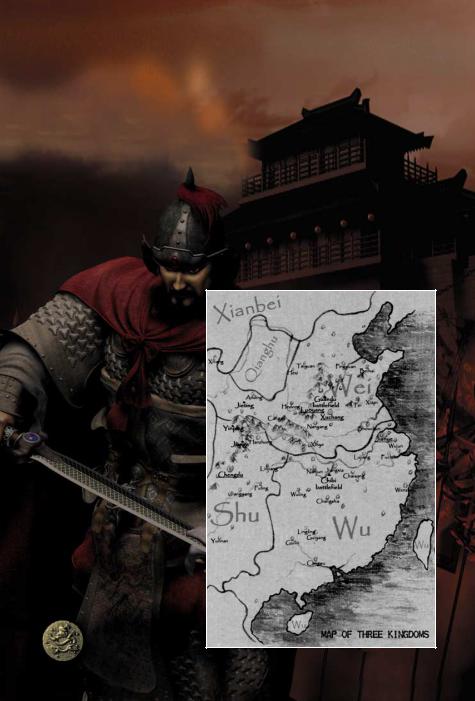
EPILEPSY WARNING
A very small percentage of individuals may experience epileptic seizures when exposed to certain light patterns or flashing lights. Exposure to certain patterns or backgrounds on a television screen or while playing video games may induce an epileptic seizure in these individuals. Certain conditions may induce previously undetected epileptic symptoms even in persons who have no history of prior seizures or epilepsy. If you, or anyone in your family, has an epileptic condition, consult your physician prior to playing. If you experience any of the following while playing a video game – dizziness, altered vision, eye or muscle twitches, loss of awareness, disorientation, any involuntary movement, or convulsions – IMMEDIATELY discontinue use and consult a physician before resuming play.
PRECAUTIONS TO TAKE DURING USE
•Do not stand too close to the screen. Sit a good distance away from the monitor, as far away as the length of the cable allows.
•Avoid playing if you are tired or have not had much sleep.
•Make sure that the room in which you are playing is well lit.
•Rest for at least 10 to 15 minutes per hour while playing a video game.
HANDLING YOUR COMPACT DISC
•The PC compact disc is intended for use exclusively on IBM compatible systems with the minimum configurations specified on the system requirements of the game purchased.
•Avoid bending the disc. Do not touch, smudge or scratch its surface.
•Do not leave the disc in direct sunlight or near a radiator or other source of heat.
•Take occasional rest breaks during extended play.
•Always store the disc in its protective case.
ESRB RATING
This product has been rated by the Entertainment Software Rating Board. For information about the ESRB rating, or to comment
about the appropriateness of
2 the rating, please contact the ESRB at 1-800-771-3772.

CONTENTS |
|
|
1. GAME FEATURES .......................................................... |
4 |
|
2. STORY BACKGROUND ................................................ |
9 |
|
2.1 |
Brief Introduction of Chinese Imperial History ...... |
9 |
2.2 |
The Glory of the Han Dynasty ................................ |
9 |
2.3 |
The Fall of a Dynasty ............................................ |
11 |
2.4 |
The Three Kingdoms Period ................................ |
13 |
2.5 |
The Three Leading Characters .............................. |
15 |
3. INSTALLING AND UNINSTALLING ........................ |
17 |
|
3.1 |
Installing .............................................................. |
17 |
3.2 |
Uninstalling .......................................................... |
17 |
4. THE MAIN MENU ...................................................... |
18 |
|
4.1 |
Single Player ........................................................ |
18 |
4.2 |
Multiplayer .......................................................... |
19 |
|
4.2.1 LAN Net Game ............................................ |
20 |
4.3 |
Options ................................................................ |
22 |
4.4 |
Credits .................................................................. |
23 |
4.5 |
Quit Game ............................................................ |
23 |
5. THE GAME INTERFACE ............................................ |
23 |
|
5.1 |
Control Panel ...................................................... |
23 |
5.2 |
Info Panel ............................................................ |
24 |
5.3 |
The Menu Interface .............................................. |
25 |
5.4 |
Online Help Interface .......................................... |
26 |
5.5 |
Check Interface .................................................... |
27 |
5.6 |
Material Resources Info ........................................ |
27 |
5.7 |
Disaster Info ........................................................ |
28 |
6. HOW TO START A NEW GAME ................................ |
28 |
|
6.1 |
Basic Operation .................................................... |
28 |
6.2 |
Administrative Management .................................. |
30 |
6.3 |
Production ............................................................ |
31 |
6.4 |
Science .................................................................. |
33 |
6.5 |
Sacrifice ................................................................ |
34 |
6.6 |
Disasters .............................................................. |
34 |
6.7 |
Diplomacy ............................................................ |
34 |
6.8 |
Trade .................................................................... |
35 |
6.9 |
Military Preparation .............................................. |
35 |
6.10War and Supply .................................................... |
36 |
|
6.11 Occupy City ........................................................ |
38 |
|
7. BUILDINGS .................................................................. |
38 |
|
7.1 |
Indestructible Buildings ........................................ |
39 |
7.2 |
Basic Buildings ...................................................... |
41 |
7.3 |
Military Buildings ................................................ |
45 |
7.4 |
Landmark Buildings .............................................. |
49 |
7.5 |
The Expense and Relationship of Buildings .......... |
50 |
8. KINGDOM INTERFACE .............................................. |
51 |
|
9. EQUIPMENT ................................................................ |
52 |
|
10. HOT KEYS .................................................................... |
55 |
|
10.1 Space Bar ............................................................ |
55 |
|
10.2 Hot Keys for Warriors’ Skill ................................ |
55 |
|
10.3 Hot Keys for Laborer .......................................... |
56 |
|
10.4 Other Hot Keys .................................................. |
57 |
|
11. CREDITS ...................................................................... |
58 |
|
EIDOS INTERACTIVE CUSTOMER SUPPORT .............. |
59 |
|
3
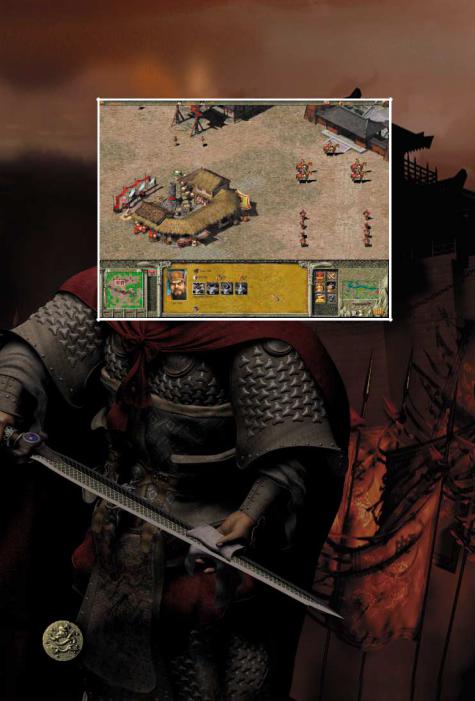
1. GAME FEATURES
GAME INTERFACE
In FATE OF THE DRAGON (FOD), two map windows are provided which enable you to keep an eye on the battlefield situation and on how your city is developing. To the right is the territory map, where you can observe the overall condition of the mission battlefield. To the left is where the city map window is set up and the target city’s condition can be monitored. Click the city buttons to the right of the latter window and you can switch between available city maps.
DESIGN OF GAME MAPS
Most games utilize a "World Map." We have introduced the concept of a multi-map system. In the territory map, cities are symbolized by “Landmark Buildings”; a corresponding city map will appear when you click on the city switch button in the bottom left corner of the screen. When game units leave the city map, they will be seen coming out of the landmark building and making an appearance on the territory map (and vice-versa).
4
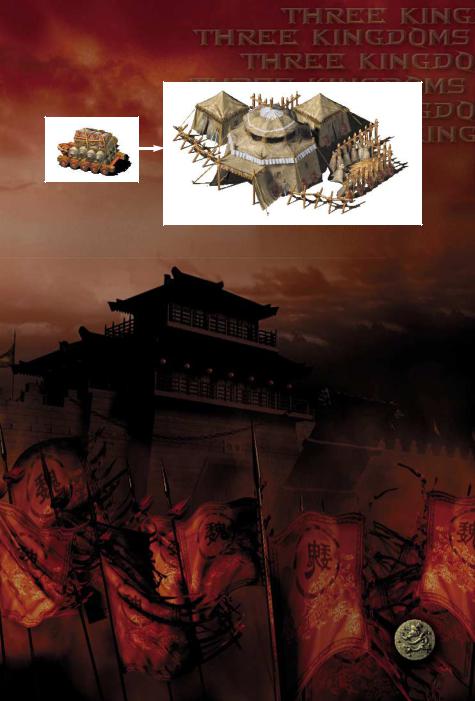
CONCEPT OF SUPPLY
The strength of troops will vary depending on whether they receive food regularly. If the food supply is inadequate, the strength of your troops will decrease, in turn lowering their fighting ability.
Furthermore, long-term food shortages can result in the loss of the degree of training in troops. The training degree can be restored in the barracks when the supplies have been replenished. The introduction of the concept of supply and demand helps expand tactical potential for the real-time strategy game.
CAMPING AND ARMY-STATIONING
Troops should be equipped with a corresponding support wagon when they are outside their own cities. If they are not backed up with a support wagon, they can’t be stationed for extended periods of time outside their cities as they will become hungry and lose strength. The support wagon can move with the troops but at a slower pace. To provide food to restore the health of your armies stationed outside enemy cities, temporary camps should be established. Laborers can be assigned to lead a group of horses to camps to maintain the food supply. Remember: a support wagon and food transport units are essential for stationing troops outside cities and will greatly enhance the chance of winning battles.
5
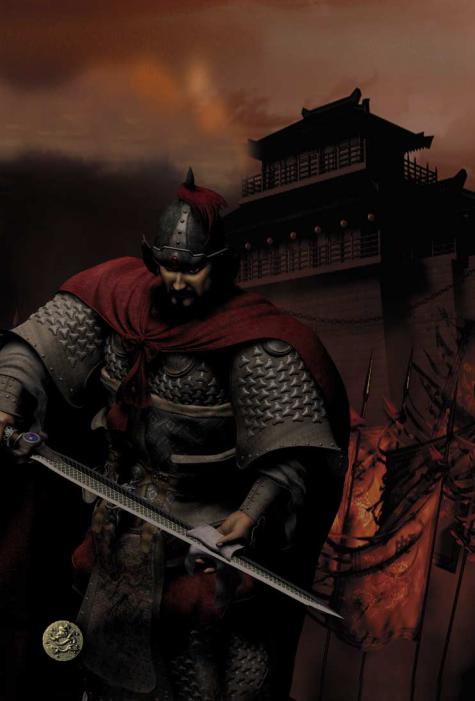
CAMPAIGNING AND TAKING CITIES
FOD has for the first time achieved the realistic graphical representation of warriors climbing ramparts and conquering cities in ancient China. Using a scaling ladder, troops can be commanded to scale the rampart and engage in close combat with the city defenders.
WARRIOR RANKS AND SKILLS
When one of your warriors is involved in a battle or holding a post in a city, he will gain a higher experience ranking and will receive an improvement in his relative attributes. When some attributes satisfy the conditions of a certain skill, a warrior will gain that skill. The tactical appointment of warriors will enhance the fighting power of the sergeants.
INTERCHANGEABLE ATTRIBUTES
OF INFANTRY AND CAVALRY BY HORSES
In FOD, horses are a very critical factor. A rigid limit on the attributes of infantry and cavalry does not exist. Infantry will turn into cavalry when they acquire horses and vice versa. Cavalry without horses (because they have dismounted or their horses have been killed) will change into infantry. By using a group of horses, laborers can transport large amounts of materials. Horses are all the same and can be used by either side. You can raise horses yourself or steal horses by killing the enemy’s cavalry or food-transporting laborers in battle.
MANAGEMENT POLICIES ARE RELATED TO TACTICS In the game, the management factors include the “Fate of your Kingdom,” “Morale,” “Reputation,” “Domestic Policies,” “Diplomacy,” “Disasters,” “Sacrifice,” “Science,” “Trade” and others, all of which can affect your Kingdom’s overall state. As a
ruler, you must keep a good balance between all the factors by the tactical appointment of officials and dealing well with all the management issues. Then, to a large extent, victories in battles and conquest of the enemy will be guaranteed.
6
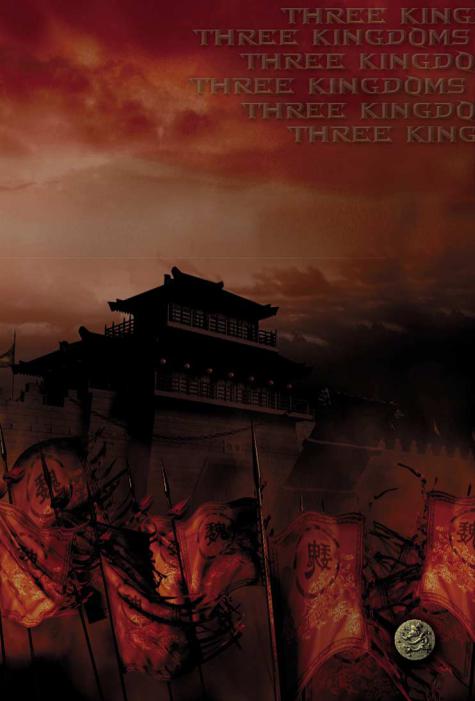
REFLECTING THE CULTURE
OF THE “THREE KINGDOMS SOCIETY”
More than 100 skills have been extracted from all aspects of the culture of the Three Kingdoms period. Most of the game factors can be improved by these skills. Each skill is titled by its ancient name with a detailed introduction in words and pictures. You can learn about how the society developed during the Three Kingdoms period while enjoying the game play.
ASSIGNMENT OF EACH LABORER
Besides chopping down trees and mining, laborers can also be assigned to work in some buildings to fulfill a building’s function. For example, farming/feeding pigs in farms or producing food and wine in a workshop.
REALISTIC DESIGN
All the buildings, the shapes of characters, the types of troops and armaments are designed proportionately according to real models extracted from historical materials. Characters can go in and out of the buildings and interact with them.
PROFESSION-TRANSFERENCE SYSTEM
This system enables a laborer to be trained to sergeant level. He can then revert to being a laborer again and do his original work if needed. Wars consume a large quantity of resources and result in a lack of supply of materials. If this becomes the case, you can command your sergeants to deal with production work through the profession-transference system. The collection of resources and production will then accelerate. This system makes it possible for you to restore production and supplies quickly, re-organize your military forces and turn around a negative situation or even win despite facing difficulties at an earlier stage.
7

VARIOUS TYPES OF ARMAMENTS
There are many types of armaments available that can be manufactured once you have obtained the right technical research level. You will have the ability to greatly enhance your attacking power and means of taking a city using the different armaments available. These different types of armaments will enable you to start wars on water or land or even to air-transport troops for a surprise attack on the enemy.
PLAYER-FRIENDLY IN-GAME HINTS
By moving the cursor over objects or areas of the interface, information will appear in real time about significant events contained in the game and offer advice and instruction. So whether you have game-playing experience or not, you can start playing and get into the action quickly.
SUPPORTING NETWORK GAME
FOD supports two game modes: a LAN net game and a Skirmish. In LAN net mode, you can choose a variety of maps to play on a LAN. In Skirmish mode, you can simulate a LAN net game mode on a single computer.
8

2. STORY BACKGROUND
2.1 Brief Introduction of Chinese Imperial History
Chinese imperial history covers a period of some 4,000 years from the Xia Dynasty circa 2100 BC to the abdication of the last Emperor, Pu Yi, in 1911.
2.2 The Glory of the Han Dynasty
The Han Dynasty lasted for 400 years, from 206 BC when it was founded by a peasant named Liu Bang to 220 AD, with a 14-year interruption from 9 to 23 AD when Wang Mang usurped the throne. Prior to Wang Mang’s usurpation, the Dynasty was known as the Western Han Dynasty, with its capital in the western city of Chang’an. When the Han Dynasty was restored in 23 AD it was known as the Eastern Han Dynasty with its capital in the eastern city of Luoyang.
Except for its last years, the Han Dynasty marked a period of great prosperity and advancement in society. The Han emperors, of which there were a total of 19, built on the legal and administrative infrastructure established by the preceding Qin Dynasty, but eased some of the severity of the Qin laws and sought to make the system more reflective of Confucian principles.
China grew rapidly in the Han Dynasty. By 2 AD it had expanded to take in North Korea, the southeast coast, the southwest as far as Vietnam and large areas of Central Asia. Northern borders were defended by the Great Wall, which was extended during Han rule.
In 165 BC Liu Heng, the third Han Emperor, introduced the policy of civil service recruitment based on examinations which tested knowledge of Confucian texts. This policy remained in place, with intermittent exceptions, for hundreds of years and contributed greatly to the overall success of the administration of Imperial China.
9
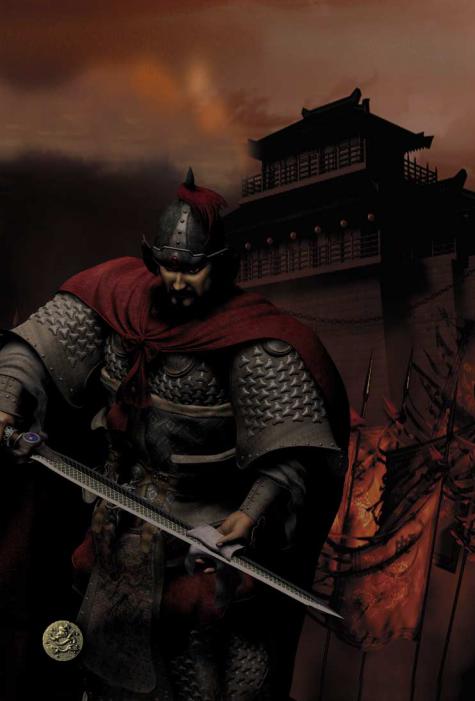
The greatest advance during the Han period was the invention of paper, attributed to a eunuch called Cai Lun in 105 AD. By the 3rd century paper was in general use, replacing the earlier bamboo, wood and silk. The invention did not reach Europe until the 12th century.
A key invention during the Han Dynasty was the magnetic compass. In about 1 AD – 100 AD, the Chinese discovered that lodestone (a type of iron ore) could be made to point north. They realized that they could magnetize the iron needles to do the same. The magnetic compass was later used to plot courses on long sea voyages.
Another significant invention during the Han Dynasty was the seismoscope. This instrument was very useful in recording the direction of even a distant earth tremor. It was invented in 132 AD by a scientist called Zhang Heng. In 138 AD the instrument detected an earth tremor some 500 kilometers away.
In the field of medicine, Zhang Zhongjing wrote The Theory of Typhoid and Other Diseases which formed the foundation of Chinese medicine.
Trade flourished during the Han Dynasty and the trading route known as the “Silk Road” developed during this time. The road ran for 11,000 kilometers from Chang’an (modern Xi’an) through Yumen and Kasghar. It reached Persia and the shores of the Mediterranean Sea. Merchants carried tea, silk and other goods from one trading post to the next.
10
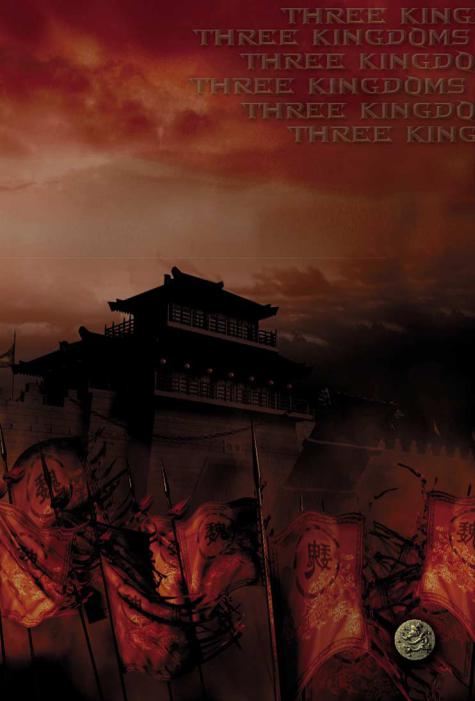
2.3 The Fall of a Dynasty
The fall of the Han Dynasty can be traced to three principal events. The first was the Yellow Scarves uprising in 184 AD. This was a rebellion of peasant farmers led by Zhang Jue and his two brothers, Zhang Liang and Zhang Bao. They styled themselves Noble General of Heaven, Noble General of the Earth and Noble General of Men respectively and tapped into widespread popular discontent caused by the corruption and inefficiency of the Han court. A classic example of this was the sale of official positions to the highest bidder by the Emperor Ling, which was designed both to fill the imperial coffers and deprive scholars of their opportunity for advancement. The Zhang brothers raised an army of hundreds of thousands of peasants and represented a real threat to the Dynasty. The Han court, which by this time was dominated by a gang of corrupt eunuchs known as the The Ten Regular Attendants, was able, with some difficulty, to put the rebellion down — but in doing so it was greatly weakened.
The second event was the ascendancy of Dong Zhuo, General of the Forward Army, Lord of Aoxing and Prefect of Xiliang. He was summoned to court by the Great General He Jin in 189 AD to help exterminate the eunuchs. He Jin himself was murdered by the eunuchs shortly afterwards and by the time Dong Zhuo reached Luoyang with his army, the court, led by the young Emperor Shao and his younger brother, the Prince of Chenliu, was on the run from a capital in chaos. Dong Zhuo, leading a large army of 200,000, quickly asserted his authority and deposed Emperor Shao, replacing him with the Prince of Chenliu, who then became the Emperor Xian. On ascending the throne, the Emperor Xian was only 15 years old. Assisted by Lu Bu, who was the foremost warrior of the time, Dong Zhuo appointed himself Prime Minister and took control of the government. He immediately imposed a vicious and coldhearted dictatorship conducted only nominally in the name of the young emperor, who was in effect held captive.
11
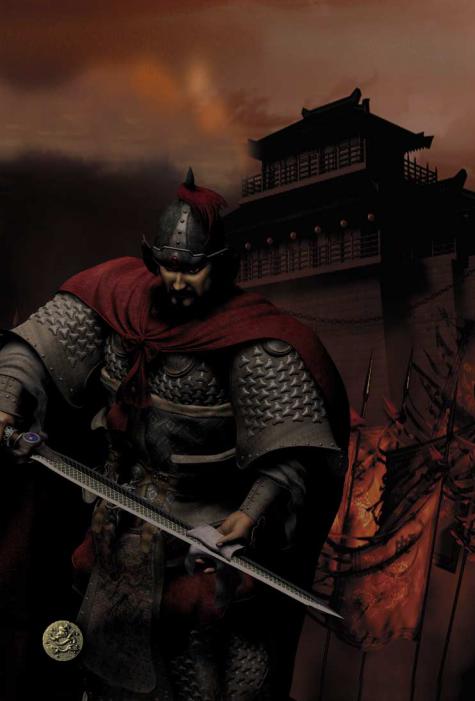
Dong Zhuo’s grab for power infuriated the loyal lords and generals. In 190 AD they formed a confederacy numbering 18 who were sworn to destroy Dong Zhuo and rescue the Emperor Xian from captivity. Cao Cao was instrumental in bringing together the other 17 lords and generals by sending a forged imperial decree to each of them.
The confederacy, led by Yuan Shao, had initial military success. This led Dong Zhuo to abandon the capital, Luoyang, and move the capital and the Emperor to Chang’an. In abandoning the capital Dong Zhuo ordered it razed to the ground, which involved a massive loss of property and valuables and huge hardship to Luoyang’s millions of residents.
After the abandonment and destruction of Luoyang, the confederacy fell apart. However, Dong Zhou’s general and adopted son, Lu Bu, murdered him in 192 AD. Thus ended a short but highly damaging period in which Dong Zhou had severely undermined the Dynasty by first deposing the Emperor, then holding captive the new Emperor and ruling himself without regard to the Emperor’s wishes, and finally inciting a massive revolt against his government by the 18 lords and generals. It was this revolt which resulted in several of the members of the confederacy assuming control of their respective territories and in effect becoming warlords. The revolt, therefore, fundamentally destabilized the realm.
The death of Dong Zhuo was followed by yet more chaos as his generals fought for power. A crescendo of chaos and violence occurred in 195 AD when the Emperor Xian was kidnapped and moved from Chang’an. The Emperor Xian then secretly sought aid from Cao Cao. This led to the third principal event to which the fall of the Dynasty can be traced, when Cao Cao responded to the Emperor’s request for aid by receiving him in Xuchang in 196 AD. From that time on Cao Cao held the Emperor captive while purportedly supporting him. Cao Cao gradually assumed the authority of the Emperor himself and in 216 AD became the King of Wei, which in effect signaled he had replaced the Emperor Xian.
12
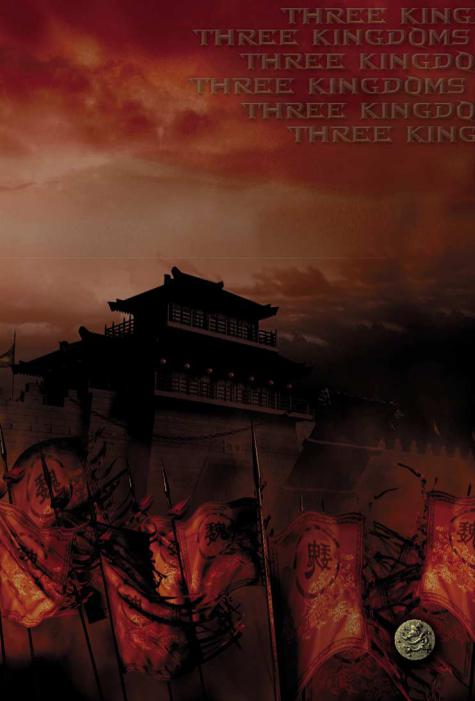
The Emperor Xian finally abdicated in 220 AD, shortly after the death of Cao Cao when Cao Cao’s son, Cao Pi, established a new dynasty, the Wei Dynasty.
2.4 The Three Kingdoms Period
It was in the context of the collapse of the power and authority of the Han Dynasty, which occurred gradually over a 35-year period, that the three kingdoms began to take shape led by the three most prominent heroes of the time: Cao Cao, who established the Kingdom of Wei in the north, Liu Bei, who established the Kingdom of Shu in the west and Sun Quan, who established the Kingdom of Wu in the south. With the exception of Cao Cao, whose son, Cao Pi, declared himself Emperor in 220 AD, each was later to declare himself Emperor.
FOD is set in a period of about 100 years of Chinese history straddling the declining years of the Han Dynasty from around 184 AD to 220 AD as well as the Three Kingdoms period from 220 AD to 280 AD. FOD is based on the famous historical novel Romance of the Three Kingdoms, attributed to Luo Guanzhong and written around 1350 AD. This novel is reputedly the second most well-read book after the Holy Bible and is hugely popular in Asia.
Primarily because of the Romance of the Three Kingdoms this 100year period is commonly referred to as the “Three Kingdoms period” even though the actual Three Kingdoms period covered only a 60-year period. This common reference for the Three Kingdoms period is used in the game and this manual.
The Three Kingdoms period is famous in Chinese history not just for the ferocity of the never-ending wars but also for the brilliance of the military strategy employed. Even today businessmen look to the strategies adopted at this time to win commercial advantage.
13
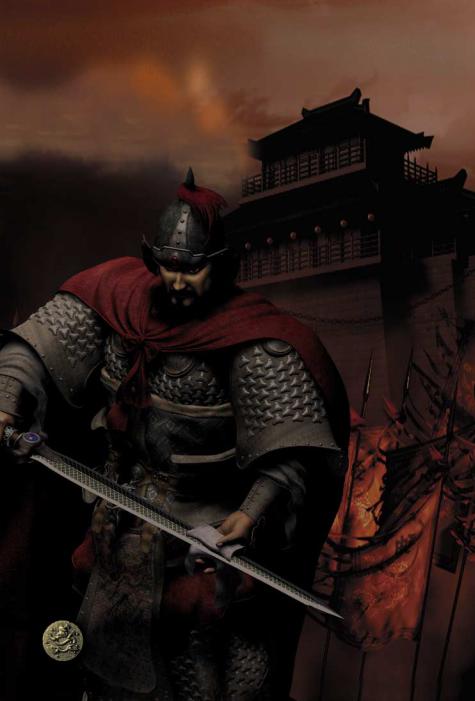
This period of Chinese history was also a time of great advancement in medicine, literature, philosophy and science. In the field of medicine, Hua Tuo, who excelled in surgery, invented the first anaesthetic called “Mafei Powder Medicine.”
Advancement in the literary field saw the creation of many works that are still read today. The Cao family was a prominent contributor to those works and Cao Cao himself wrote over 20 poems and some 40 pieces of prose which fall into this category. In the field of philosophy, the emergence of metaphysics was considered an outstanding accomplishment credited to He Yan and Wang Bi. In the field of science, Liu Hui, a famous mathematician, first calculated the ratio of the circumference of a circle to its diameter.
The Three Kingdoms period also saw an increase in navigation, exploration and diplomatic activity. In 230 AD a huge ship carrying 10,000 people reached the island now known as Taiwan, marking the first recorded contact between the mainland and Taiwan. In the field of diplomacy the Kingdom of Wei maintained close contact with the country of Xiematai, now part of Japan. The Kingdom of Wu sent envoys to Linyi, now the southern part of Vietnam, and to Funan, now part of Cambodia.
In 263 AD the Kingdom of Shu was conquered by the Kingdom of Wei after the second Emperor of Shu, Liu Bei’s son, Liu Shan, surrendered to Deng Ai, the Senior General of Wei. In 266 AD Sima Yan, the eldest son of Sima Zhao (the effective ruler of Wei at the time of the conquest of Shu) forced the Wei Emperor to abdicate and founded the Western Jin Dynasty. Finally, in 280 AD Sima Yan conquered the Kingdom of Wu and united the entire country. Thus ended the Three Kingdoms period. FOD offers different endings that can be achieved involving ultimate victories by the Kingdom of Shu and Liu Bei or by the Kingdom of Wu and Sun Quan.
14
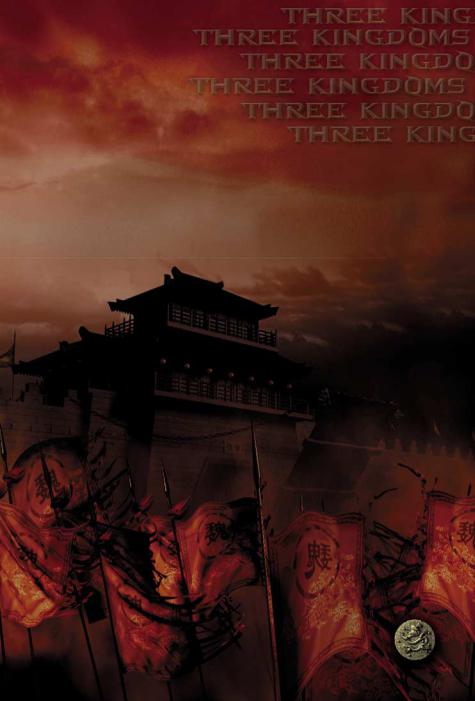
2.5 The Three Leading Characters
The three leading historical figures in the Three Kingdoms period, Cao Cao, Liu Bei and Sun Quan, are the main characters in this game. Here is a brief description of their backgrounds.
CAO CAO
Cao Cao was descended from Cao Can, the Premier in the Western Han Dynasty. Cao Cao was skillful in strategy and adapted himself quickly to changing circumstances. It was said of him: “You are clever enough to govern the world but bad enough to upset it.” It was said this prediction gave Cao immense pleasure. At the age of 20, his district recommended Cao Cao for his filial piety and personal integrity. This led to his initial appointment to the court. Cao Cao was known for commanding his troops with very strict discipline. Later he fled back to his hometown when he failed in his attempt to assassinate Dong Zhuo.
At home in Chenliu, Cao Cao enlisted aid and resources to start his own military actions. He then called upon many other powerful lords to combine their strengths against Dong Zhuo. Cao Cao never stopped trying to recruit the most able and virtuous men. He was an expert in judging people’s worth and knew how to employ them to the best advantage. He was also a master of military strategy. All this enabled him to have a wealth of talents, elite troops and excellent support for his armies.
Cao Cao’s moment came when he was invited by the Han court to rescue the Emperor Xian, who was held hostage in the bitter fighting between Dong Zhuo’s generals. He defeated the rebels who were holding the Emperor and then persuaded the Emperor to move the capital to Xuchang. From then on, Cao Cao effectively held the Emperor captive and ruled in his name, giving orders to all the other lords. Cao Cao successively eliminated the lords, Yuan Shao, Ma Teng, Zhang Lu and others. Finally he took complete control of the northern part of China and established the Kingdom of Wei.
15
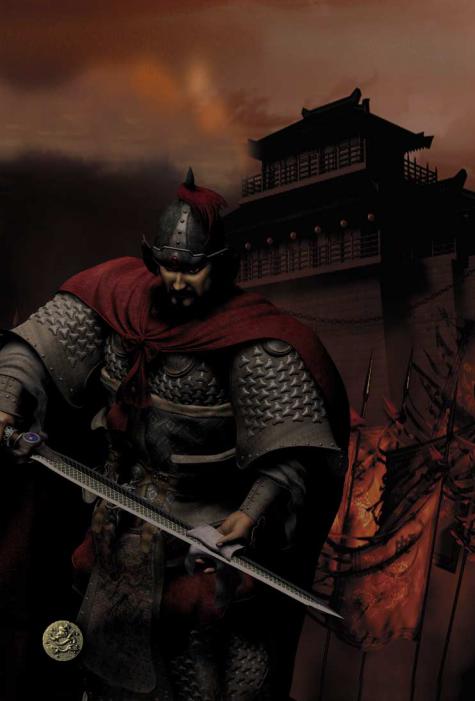
LIU BEI
Liu Bei was a member of the imperial family and was known as Imperial Uncle Liu. However, in his childhood he was very poor.
His ambition was to restore the Han court and be known for his humanity and virtue. From the beginning of his military career, when he fought the Yellow Scarves, he experienced many setbacks. On a number of occasions, he almost lost his life.
However, Liu Bei was fortunate in that three very powerful warriors assisted him. His two sworn brothers Guan Yu (Lord Guan, so called because from the Ming Dynasty onwards he was worshipped as the God of War in temples throughout the country), Zhang Fei, Zhao Yun (Zhao Zilong) and Zhuge Liang (Kongming) who was a genius of military strategy and tactics as well as a brilliant administrator and inventor. With the loyal support of these great men, Liu Bei was able to found his Kingdom of Shu in the west of the country.
SUN QUAN
Sun Quan was the second son of Sun Jian, the Governor of Changsha. Sun Jian was killed in a battle against Liu Biao.
With the assistance from Sun Jian’s former aides and staff, his eldest son, Sun Ce, destroyed all the minor vassals in the south of the Great River. He intended to occupy the entire Wu area and then the whole realm, but died of a sudden illness when he was only 26.
After Sun Ce’s death, Sun Quan took over the estate left by his late father and elder brother. Sun Quan treated worthy men with respect and attracted many talented people to his service. In alliance with Liu Bei, Sun Quan won a stunning victory against Cao Cao at the Major Battle at Red Cliffs. From then on, with the natural barrier of the Great River and by employing just and able rule, he was ultimately able to establish the Kingdom of Wu in the south
of China.
16

3. INSTALLING AND UNINSTALLING
3.1 Installing
Two methods are provided to install FOD:
The FOD installation program runs automatically when the CD is inserted if it detects that the game has not been previously installed and your CD-ROM has autorun activated. Then click on “Install” and finish the installation following the on-screen instructions. You may have to install DirectX and Video Decoder during installation if you do not already have one or both installed on your machine.
If your PC does not have autorun activated, click on “My Computer” and double-click on your CD-ROM drive. This will prompt the autorun. Once on-screen, please follow the instructions.
When the installation is finished, you can click on “Play” on the interface to run the game directly, or you can choose to run the game from the Start menu.
3.2 Uninstalling
To uninstall FOD, open the Start menu, move the cursor through to the Fate of the Dragon folder and then click on “Uninstall.” Then follow the on-screen instructions
Alternatively, open the Start Menu, move the cursor to “Settings,” then “Control Panel.” Double-click on “Add/Remove Programs.” Once here, select "Fate of the Dragon” and then click on the “Add/Remove” button and follow the on-screen instructions.
17
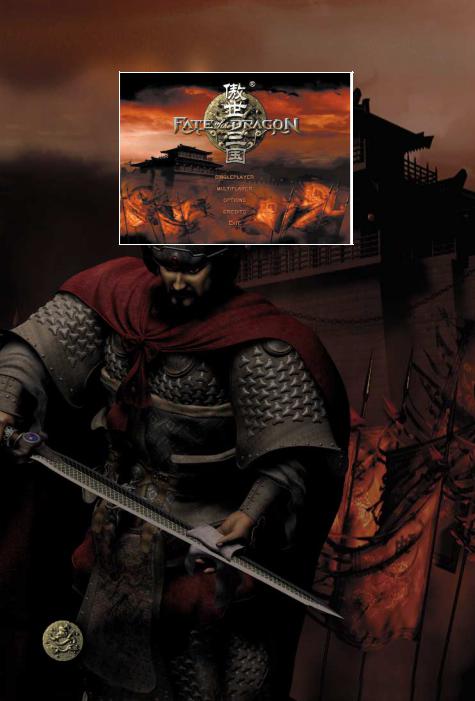
4. THE MAIN MENU
In the Main Menu, you can start a new game, change the game setup, enter a multi-player game, view the credits or quit the game and return to the Windows desktop.
4.1 Single Player
START A NEW GAME
Click on “Single Player” and you can select “Easy,” “Normal” or “Hard.” Then choose the main character you prefer to play as in the game. Provided you have completed all the missions of any of the warlords in “Hard” mode, the system will add a new difficulty mode of “Nightmare.”
From left to right are the portraits of Liu Bei, Cao Cao and Sun Quan respectively. Left-click on one of the portraits and the picture will highlight. Click on “Start” and your campaign begins.
SELECT CAMPAIGN
You have to complete at least one mission to make this option appear and all the missions you have completed appear in the mission list. After clicking on “Select Campaign,” you can then replay any mission in this list.
18
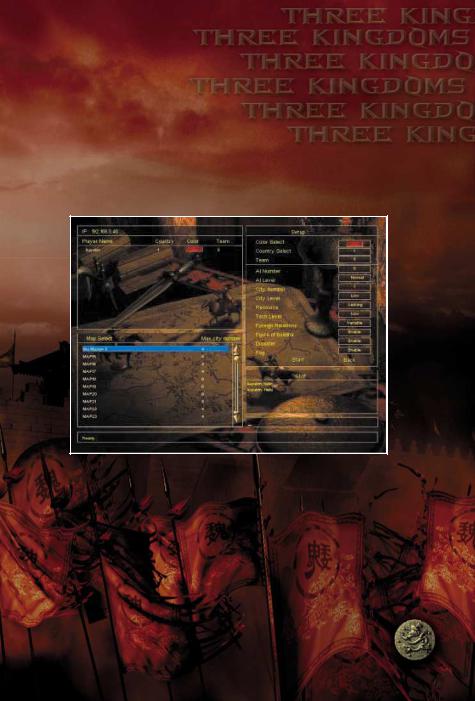
LOAD GAME
Here you can load a saved game.
Click on “Cancel” to return.
Click on “Remove” to delete the loaded game.
SKIRMISH
This will allow you to play single-mission scenarios against computer-controlled opponents.
4.2 Multiplayer
You can play Multiplayer FOD over a LAN network, Internet or Serial Interface.
19
